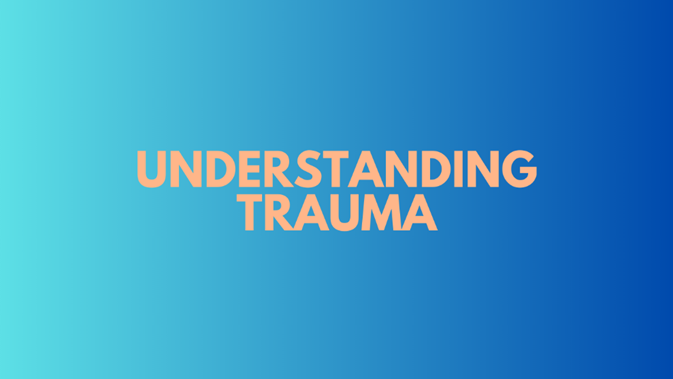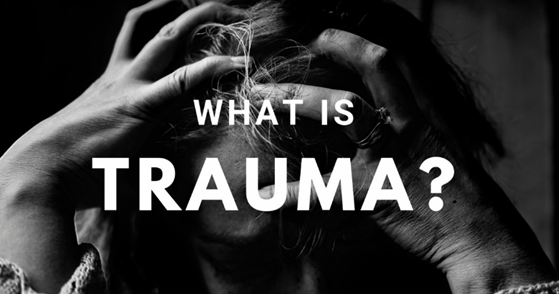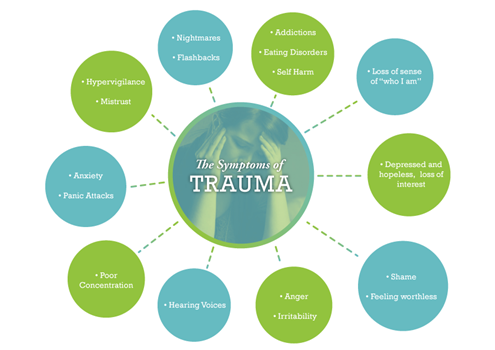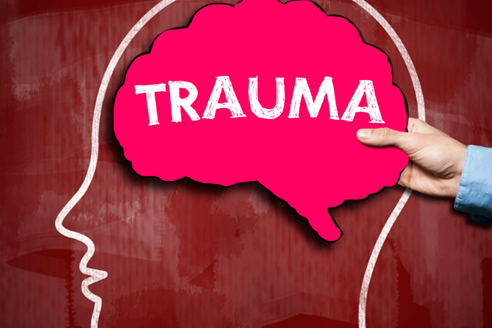
Trauma isn’t always visible, but its impact runs deep. Whether caused by a single event or ongoing experiences, trauma affects the way people think, feel, and live. It can disrupt lives, relationships, and even physical health often long after the event has passed.
Understanding trauma is the first step toward healing. Let’s break it down.
WHAT IS TRAUMA?


Trauma is the emotional and psychological response to a distressing event or series of events that overwhelms an individual’s ability to cope. It can be caused by:
– Accidents or natural disasters
– Abuse or neglect
– Violence or war
– Loss of a loved one
– Medical emergencies
– Ongoing emotional stress (e.g., bullying, poverty, discrimination)
Trauma can happen to anyone regardless of age, gender, or background.
TYPES OF TRAUMA.
1. ACUTE TRAUMA – Results from a single event (e.g., car accident, assault).
2. CHRONIC TRAUMA – Repeated and prolonged exposure to distress (e.g., domestic abuse, childhood neglect).
3. COMPLEX TRAUMA – A combination of multiple traumatic experiences, often during development.
4. SECONDARY/VICARIOUS TRAUMA – Emotional impact from hearing about or helping others through trauma (common among caregivers, healthcare workers, journalists)
COMMON SYMPTOMS

Trauma affects everyone differently. Some common signs include:
– Intrusive memories or flashbacks
– Nightmares or sleep problems
– Anxiety, irritability, or anger
– Feeling numb or disconnected
– Difficulty concentrating
– Avoiding reminders of the trauma
– Physical symptoms like headaches or fatigue
For some, these may evolve into Post-Traumatic Stress Disorder (PTSD) if left untreated.
TRAUMA IN CHILDREN
Children often express trauma through behavior rather than words. Signs may include:
– Regression (e.g., bedwetting, clinging)
– Sudden changes in mood
– Aggression or withdrawal
– Decline in school performance
Early support can prevent long-term effects and promote healthy emotional development.
HOW TRAUMA AFFECTS THE BODY AND BRAIN

Trauma isn’t just “in the mind.” It activates the fight, flight, or freeze response, releasing stress hormones like cortisol and adrenaline. Over time, chronic trauma can disrupt:
– Brain development
– Immune and digestive systems
– Sleep cycles and memory
– Emotional regulation
It’s why trauma survivors may feel “stuck” or overwhelmed even years later.
PATH TO HEALING

Healing from trauma takes time, support, and the right tools. Some approaches include:
– THERAPY: Trauma-informed therapy (like CBT, EMDR, or somatic therapy) helps reprocess and release painful memories.
– SUPPORT GROUPS: Sharing with others who understand can ease isolation.
– SELF-CARE: Gentle routines, mindfulness, rest, movement, and creativity all support recovery.
– MEDICAL SUPPORT: In some cases, medication may be prescribed to manage symptoms like anxiety or depression.
Most importantly, healing is not linear, setbacks happen, but progress is still possible.
Trauma may change you, but it doesn’t have to define you. With the right support and understanding, many people not only recover — they grow stronger. If you or someone you know is struggling with trauma, reach out. Healing begins when we stop suffering in silence.

